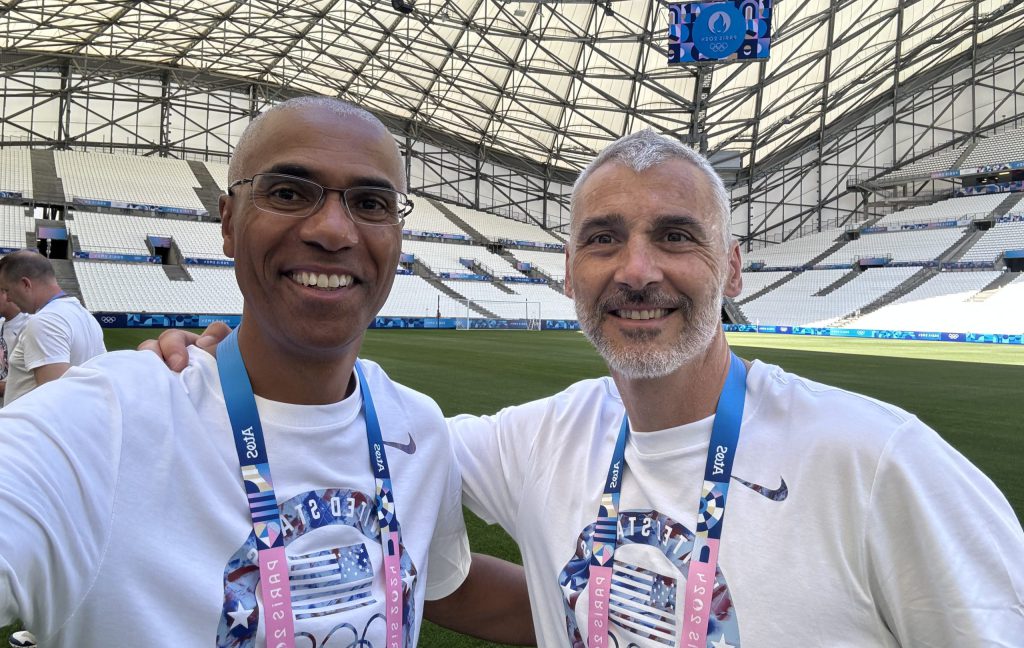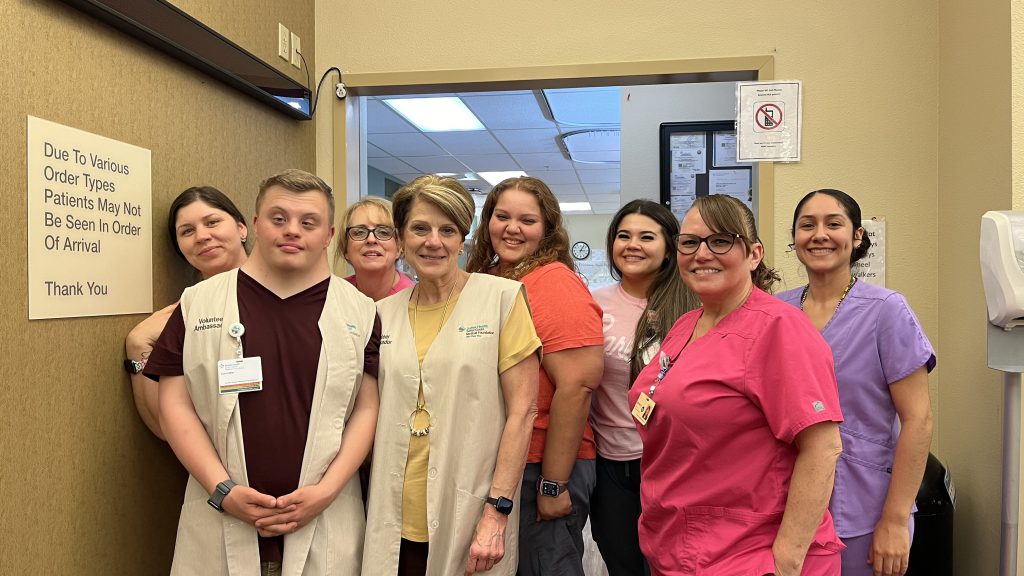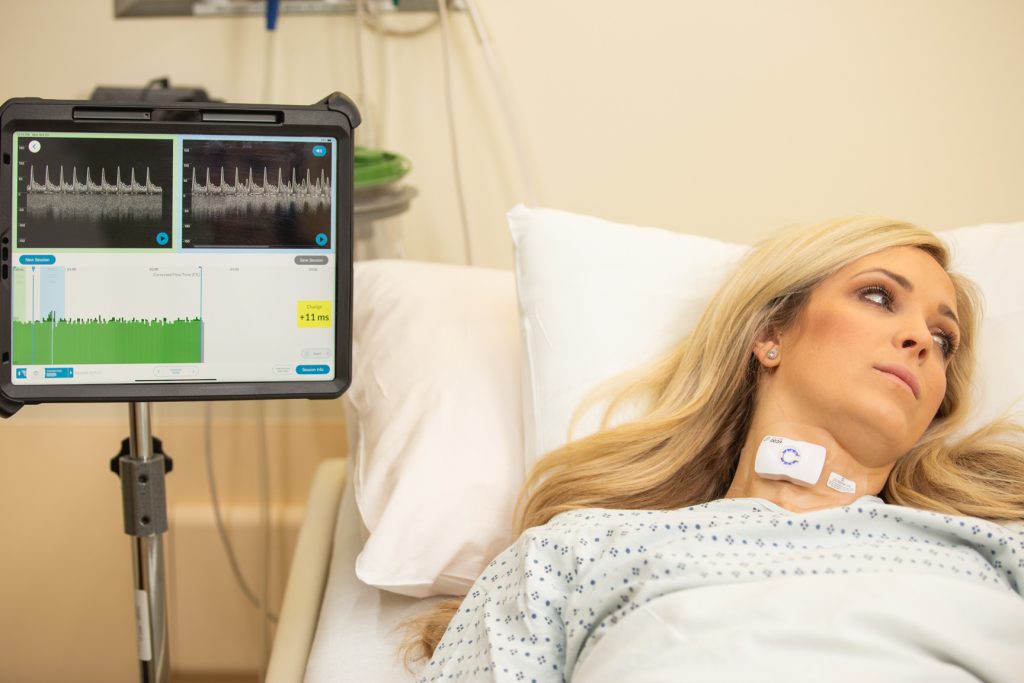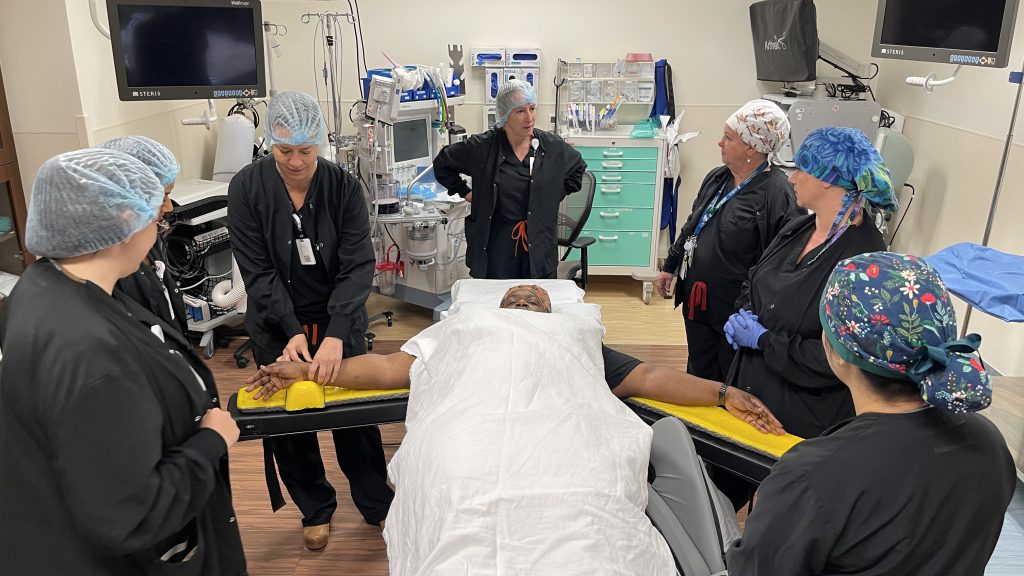by Kathy Engle, Vitals Contributor
Recently, millions of people watched in real time as Buffalo Bills safety Damar Hamlin suffered cardiac arrest on the football field. Fortunately for Hamlin, CPR was immediately begun by the Bills’ medical team, and his heart was shocked with a portable device called an AED. Time is critical when the heart stops, but you don’t have to have a highly practiced team of experts in every case –sometimes just a Good Samaritan or two make the difference.
Good Samaritans certainly helped save 80-year-old Robert Trask, who was riding his bike along the Sawyer Camp Trail at the Peninsula’s Crystal Springs Reservoir when he suffered cardiac arrest. He was found by Dr. Eric Ernster, who is an emergency medicine physician at Sutter Health’s Mills-Peninsula Medical Center. “I was running and saw a cyclist down on the side of the trail,” Dr. Ernster recounts. “As I approached, [I discovered] he was not breathing and had no pulse, so I started CPR immediately.”
The Sawyer Camp Trail has restricted access, making it a logistical challenge for paramedics to reach Trask as they navigated at least a mile down the trail. For more than 20 minutes, Dr. Ernster administered CPR, rotating with two other bystanders who were also out exercising.
“With this extended time down, I was worried about the prognosis,” Dr. Ernster says, “But you don’t have to be a doctor to administer CPR, it is just important to know that basic CPR knowledge can be a lifesaver and if you are physically able to help you should try.”
Once the ambulance arrived paramedics used a defibrillator and got a pulse right away. They transported Robert to the Emergency Department at nearby Mills-Peninsula in Burlingame. He was first given a CT scan of the brain as he had fallen off his bike and it was unknown if he had hit his head. But Robert’s heart stopped again just after the scan, making an emergency procedure in the catheterization lab a priority. Robert received two stents to repair a very significant blockage of the left main and left circumflex coronary arteries. Dr. Elliot Groves was the cardiologist on duty when Robert arrived.
“Because of our location, we see a lot of acute heart attacks in our emergency department which allows us to work quickly and efficiently for patients like Robert,” Dr. Groves says. “Working on so many cases helps our team choose optimal treatments for our patients to provide them with the very best outcomes.”
Staying Healthy and Keeping Moving
Robert’s condition was tenuous for the first 24-36 hours after surgery. He was suffering from serious cardiogenic shock—a condition when the heart cannot pump enough blood and oxygen to the brain and other organs. He was also placed on a cooling protocol to help his brain heal. A full recovery was not a guarantee. However, two days later Robert was taken off a ventilator with normal neurologic function and he was discharged a few days after that.
“I don’t remember anything. It was like someone turned out the light and that was it,” Robert says. “What I do remember is when Eric came to visit me in the hospital, it made us both tear up.” No one knew who this man was entering the room, until it registered that he was the one who had initiated CPR. Fighting back emotion again Robert continues, “Every day I think about how lucky I was.”
Another bit of luck for Robert was his proximity to Mills-Peninsula. The hospital was named 5th in state for coronary intervention from Healthgrades, an online resource providing consumers information about physicians and hospitals. Mills-Peninsula also placed in the top 100 in America for cardiac care. Generous community donors enhanced the catheterization lab where Robert received his surgery, and they are stepping up again to provide funding to upgrade the lab with even higher visualization tools for surgeons like Dr. Groves.
“I realize now that most people my age might not have made it through,” Trask adds. “The medical team did a great job and of course the bystanders on the trail saved my life.”
Trask says he had no prior signs of illness. He rides his bike at least three times a week and in general credits a former colleague for his exercise habits.
“I taught at Carlmont High School in Belmont for 38 years and another man on the faculty had been captain of the Cal track team, he got me into running and that might have been what saved me,” says Trask who used to run up to 12 miles at a time before switching to lower impact exercise like bicycling. He continues to exercise regularly today, although for now he sticks to paths in town.
Be Prepared, Get Trained
For information on CPR and AED training classes, visit the American Heart Association (Bay Area or Sacramento) or American Red Cross websites.
An automated external defibrillator (AED) is used to help people experiencing sudden cardiac arrest. The fairly easy-to-use medical device analyzes the heart’s rhythm and, if necessary, delivers an electrical shock to help the heart re-establish an effective rhythm. Look for AEDs at amateur and professional sports venues, public buildings including airports, and many worksites. There are even free apps such as PulsePoint and StayingAlive to help locate nearby AEDs.
Read more about CPR and AEDs here.





